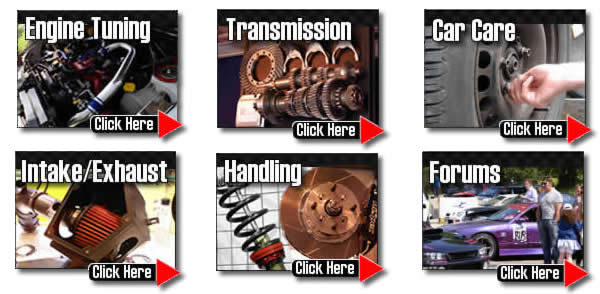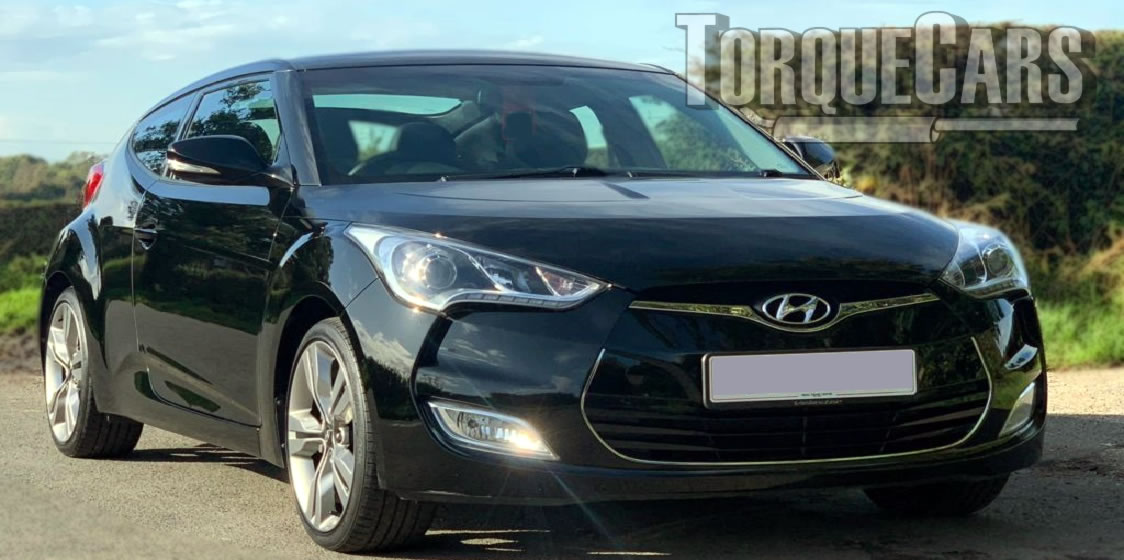Tuning the Hyundai Veloster
"Thanks for reading our Hyundai Veloster tuning article."
The Veloster is a very well appointed coupe, proving once again that you can't overlook Hyundai when it comes to car styling and performance cars.
The door configuration is often criticised but it actually works really well and saves weight. How many other coupes out there give rear passengers easy access with a door on the pavement side?
The second generation builds on the success of the first offering a fantastic multi link suspension and some very tasty turbo engines.
We can't wait to have a play with the performance Veloster N version and are sure it will offer much.
The Veloster is a good project car to have. The key to Veloster tuning is finding the right mods you can waste loads of money if you do it wrong.

Handling/Suspension upgrades
Handling modifications are at the top of your mod list for the Veloster.
Fully adjustable suspension allows you to fine tune the handling of you Veloster dramatically enhancing your drive.
Drop the car by as much as 30mm - 41 mm. and fit motorsport grade stiffer dampers, bigger drops will need other modifications in most instances.
Turning our attention to the engine we need to get a bit more power out of the top end.
Smaller engines do not provide much of a return in terms of power so start with a bigger engine and preferably one with a Turbo. Engine swaps are a good option if you have a small engine size.
We have seen turbo transplants on the smaller engines, but these take a lot of setting up.
Tuning modifications.
- 1.6 L Gamma G4FC i4 (gasoline)
- 1.6 L Gamma G4FD GDI i4 (gasoline)
- 1.6 L Gamma G4FJ turbo GDI i4 (gasoline)
Second generation engines
- 1.4 L Kappa turbo GDI i4 140PS (gasoline)
- 1.6 L Gamma G4FJ turbo GDI i4 204PS (gasoline)
- 2.0 L Nu MPi 2.0L i4 149PS (gasoline)
- 2.0 L Theta 2.0T GDI turbo turbo GDI i4 250PS/275PS (gasoline)

Engine power ranges from 147hp to 271 hp and the 2.0 Theta TGDi engine is a fantastic power plant and great choice for the Veloster chassis.
The following sports parts are usually fitted by our members, decide how far you want to push your car before you start.
Getting the best performance upgrades for your planned usage of the car is vital. Stage 3 competition upgrades just won't work well on the road and will make the car undrivable.
Please watch our introduction Video tutorial to car tuning. Be sure to subscribe and support our new channel.
How to tune your car
- Improve the handling
Focus on Suspension improvements, such as coilovers and make sure the bushings are in good order and that the alignment is correct. Then focus on improving the brakes, with a big disk brake conversion kit and fast road brake pads.
- Remove restrictions
Focus on the intake and exhaust with filters being the common point of restriction in a tuned car. Intercoolers may also become restrictive on turbo engines so this may also need to be uprated.
- Burn more fuel & air
Increase the fuelling so it matches the air coming into the engine. The ratio is important so you need to improve the fuel pump and injectors, so the head mods, big valve conversions, fast road camshafts and forced induction upgrades extra supply of air is adequately met.
- Test and replace any weak parts
Weak areas are commonly the clutch, the turbocharger and pistons and crankshaft in a highly tuned engine. Makes sure these components will cope with your power aspirations.
- The Tune or Remap
A cars ECU controls the fuel, timing, spark and even the turbo in some cases, so to fully extract your gains you should remap the car last and this will fully release the power. Some cars are easy to map, and others require piggyback ECU's or aftermarket ECU's but this is the most vital step of your tuning project.
Modifying to Stage 1:
Suspension upgrade (drop 30mm - 41 mm.), Panel air filter, Remap, Lighter flywheel, Alloy wheels, Sports exhaust.
Modifying to Stage 2:
Fast road cam, Ported and polished head, high flow fuel injector, fuel pump upgrades, Power/Sport clutch.
Modifying to Stage 3:
Internal engine upgrades (pistons/head/valves), Adding or upgrading forced induction (turbo/supercharger), Sports gearbox, Engine balancing, Competition cam.
Peak power is all well and good but for a daily driven car you need a wide power band and perhaps extending the rev range.
In this article we shall give an overview and introduction to the best upgrades for your car, but we'd encourage you to spend some time on the site looking into the details of each type of performance part.One of the best mechanical motorsport parts you can do on your NASP engine is to fit a fast road cam .
The exhaust & intake valve durations play a huge role in your cars power band, but be careful here, getting this wrong can upset the idle and make the car hard to drive in traffic. You'd need to follow a cam upgrade with other mods and finish with a remap to fully realise your gains.
Don't forget to look at the fuelling when you are increasing the power - it makes the car more thirsty.
Frequently power losses, and erratic idling after tuning parts are done can usually be traced to timing or fuel delivery issues. Uprating the injectors is another beneficial modification and will deliver sufficient fuel.
If have increased your fuelling with bigger injectors you will also need to get a bigger fuel pump to supply it.
Intake and Exhaust Tuning.
Now we move on to the intake and exhaust and ensure proper flow through the engine. Contrary to popular belief there is often a small power gain to be had by fitting an induction kit, they only become beneficial and are recommended after you increase the engines power to the point where the standard air intake box cannot cope!
Maximum power gains come from a full induction kit with a cold air feed on heavily tuned engines, this can be sited within an air box but a panel filter should suffice for most applications. TorqueCars suggest you use a panel air filter as these are easy to clean and maintain and generally perform better than paper ones.
Sports exhausts will certainly help air flow from the engine but avoid an exhaust that is too big or you may end up will reduce the flow rate. Stick to 1.5 to 2.5 inches as a rule of thumb.
Getting the head ported and polished will assist in flowing more air into each cylinder. This is definitely a job for a pro with a flow bench. A good multi plate fast road sports clutch will help to keep that power going where it should. Never cut corners or think that a standard clutch to cope. The best mods in our experience for your Veloster are a remap especially on a turbo, a fast road camshaft and sports exhaust, with a good air intake.
Turbo engines are just begging to be flashed. You will see massive power gains on most modern turbo engined cars including diesels making a remap one of the most cost effective and massive modifications for your money.Adding forced induction will see phenomenal power gains but this is usually too expensive to be cost effective. Superchargers are often easier to add than a turbo. It is more challenging to map a turbo as the boost increases exponentially with rpm.
Superchargers will give a boost which is correlating to engine speed so is simpler. Decreasing the engines compression ratio will allow you to add forced induction, water injection may also help prevent detonation.
Alloy wheel upgrades.
Because alloys are lighter they improve performance and they will help to cool the brake disks. Pay attention to your choice of tyres (tires) for your car, a good track legal slick tire can really enhance your cars handling. Please note that although they can look cool on the Veloster large alloy wheels will actually decrease your performance. The larger you go the lower your acceleration will be - this to the change in your effective final drive ratio.
Because of this endeavour to keep the overall rolling diameter of the wheel the OEM setup. In all cases we do not recommend going larger than 18 inches.
For more information on Tuning your car please join us in our friendly forum where you can discuss Veloster options in more detail with our Veloster owners. It would also be worth reading our unbiased Hyundai tuning articles to get a full grasp of the benefits and drawbacks of each modification.
Please help us improve these tips by sending us your feedback in the comments box below.
We love to hear what our visitors have got up to and which mods work best for them on each model of car. Comments are used to improve the accuracy of these articles which are continually updated.
If you liked this page please share it with your friends, drop a link to it in your favourite forum or use the bookmarking options to save it to your social media profile.
Check out TorqueCars new YouTube channel, and see their awesome new content...
Feedback
Please use our forums if you wish to ask a tuning question, and please note we do not sell parts or services, we are just an online magazine.
Help us improve, leave a suggestion or tip
